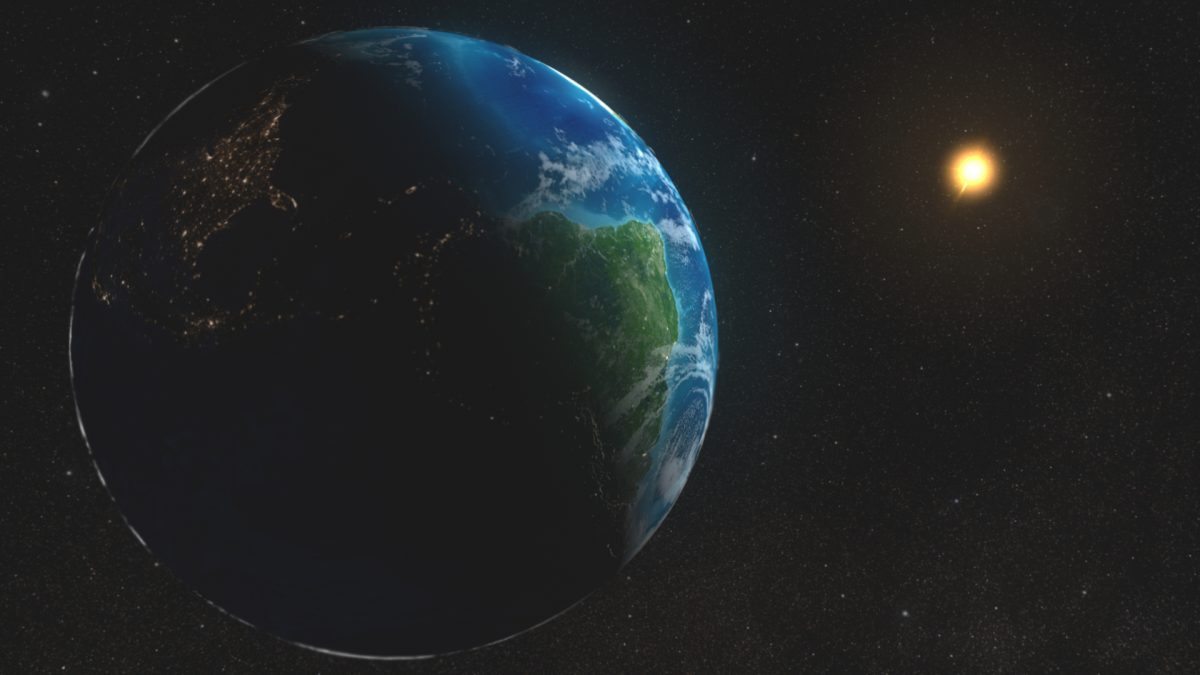Gravitational waves are produced when black holes, stars or planets orbit each other (among other things). As these masses move around each other, they create gravitational disturbances that radiate outward. While we’ve only recently detected gravitational waves directly, we’ve known the exist for decades because of a secondary effect known as inspiraling. As gravitational waves radiate away from two orbiting masses, they carry a bit of energy with them. As a result the two masses lose a bit of energy and move closer to each other. Over time they will spiral ever closer until they collide.
The direct detection of gravitational waves showed how two black holes entered such a death spiral, merging to become a single black hole. We’ve also observed the inspiraling of a pulsar orbiting a companion star. The two haven’t collided yet, but will eventually collide in about 300 million years. So what about smaller masses? As the Earth orbits the Sun, does it produce gravitational waves? Does the Moon? Yes, but the effect is extremely tiny, so we can’t observe it directly.
Take the Earth, for example. The amount of gravitational energy lost by two masses in a circular orbit is pretty easy to calculate, and for the Earth and Sun it comes out to be about 200 watts. That tiny loss of energy means that the Earth moves closer to the Sun by about the width of a proton each day due to gravitational waves. Of course gravitational waves aren’t the only thing that affects Earth’s orbit. Because the Sun is radiating away about 5 million tons of mass every second, the gravitational attraction of the Sun is decreasing, the Earth actually moves away from the Sun by about 1.6 centimeters per year. Even that tiny effect is far more significant that the inspiraling effect of gravitational waves.
Technically all orbiting masses generate gravitational waves, so everything is inspiraling over time. But unless the masses are really large, such as stars and black holes, the effect is negligible. As far as planets are concerned, we can effectively ignore it.












Comments
But if you add all up…lets say into a milky way…the influence to stay or move becomes a factor. Still waiting to see a center point to center point map of all planets and stars on a Earth time / positional directional map
When the Sun expands it swallow Earth.
Brian – thanks as always for your posts. I have a very tiny niggle (which bothers me in a lot of blogs and news stories and conversations too ;-} ). You say “The amount of gravitational energy lost …. for the Earth and Sun it comes out to be about 200 watts. ” Watts are units of power, of course, and are joules (energy) per second. The 200 watts gravitational dissipation comes out to about 17 million joules a day. As you say, an entirely undetectable and inconsequential amount.
Yeah, sometimes when writing a basic post I’ll use energy in a general sense, rather than the more correct “power.”